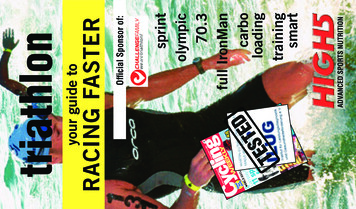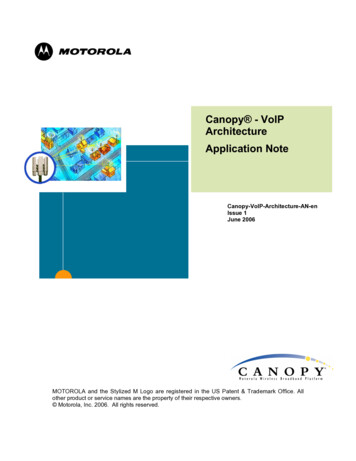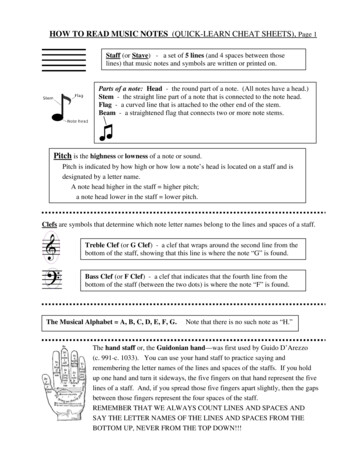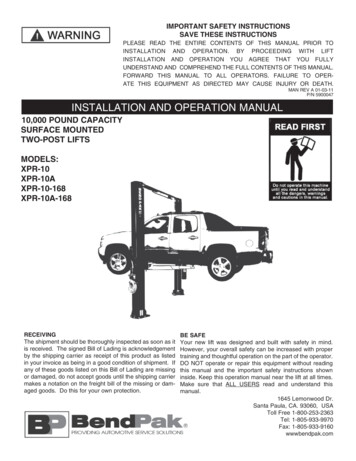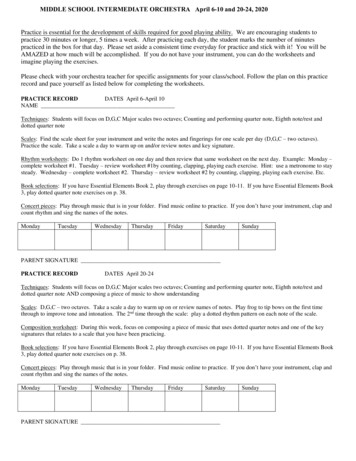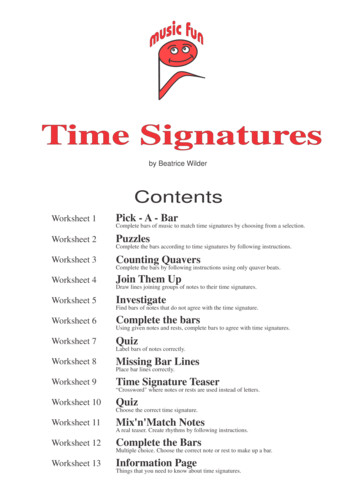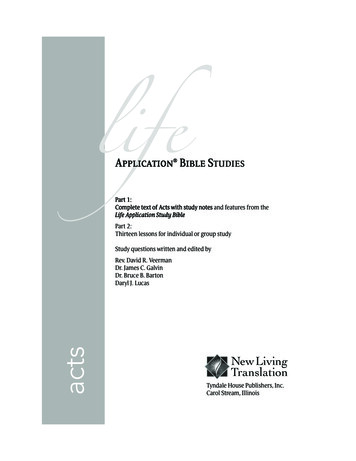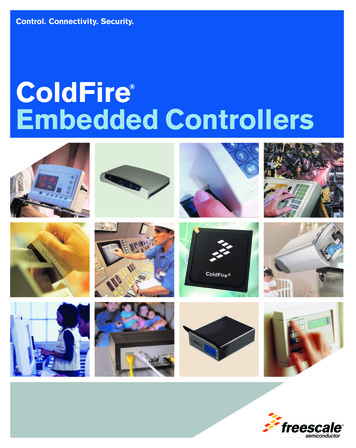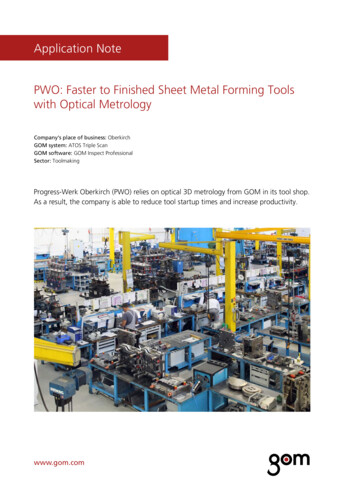
Transcription
Application NotePWO: Faster to Finished Sheet Metal Forming Toolswith Optical MetrologyCompany‘s place of business: OberkirchGOM system: ATOS Triple ScanGOM software: GOM Inspect ProfessionalSector: ToolmakingProgress-Werk Oberkirch (PWO) relies on optical 3D metrology from GOM in its tool shop.As a result, the company is able to reduce tool startup times and increase productivity.www.gom.com
One of the key requirements of the German automotiveindustry is to reduce the time to market in the face ofincreasing demands on quality control. This is having animpact in toolmaking too. To remain competitive, it is vitalto reduce tool startup times and improve quality, as onlyperfectly developed and produced tools will guaranteecustomers an impeccable final product.One company meeting the high customer demands offirms such as VW, BMW and Mercedes-Benz is automotivesupplier PWO. The core expertise of the group, whichwas founded in 1919, is primarily in stamping, drawing,bending, transfer, and progressive tools. PWO‘s productsrange from tools for the manufacture of motor housings,motor mounts or air springs to tools for airbag components. Each year, the company produces up to 70 toolsets, in some cases consisting of 14 individual stages.To meet the special requirements generated by the varioustools, PWO has been using the ATOS Triple Scan fromGOM since 2010. The non-contact 3D scanner is usedboth during manufacturing and tool tryout and whenservicing and maintaining them.Optical Metrology Reduces Development TimesDue to the large number of changes, the tryout processinvolves several weeks of trial and error for each toolmaker. The individual contouring and geometry of thesheet metal parts must be tested and measured eachtime, and the tool subsequently reworked. The use oftactile measuring machines is a particularly time-intensiveprocess during the tryout. Thus, measuring a part canoften take several hours. In addition, each individualmeasuring point must be programmed in beforehand.Fig. 1: At PWO, up to 70 tools are manufactured each year for the company‘s varied spectrum of components.www.gom.com
PWO aimed to shorten this process by purchasing theATOS non-contact 3D scanner. Instead of spending hourson tactile measuring procedures, PWO now capturesshapes, individual parts, and active elements – i. e. anyparts that are actively involved in the cutting, bending,and forming process – quickly and without contact. Thesensor is accurate down to a few hundredths of millimeter, depending on the measuring volume. To carryout the measurement, the scanner projects a fringepattern onto the measuring object, which is distortedby the component‘s contour. This distortion is recordedby two cameras, each with 16 million measuring pointsper scan, and used as the basis for a point cloud, whichprecisely visualizes the component‘s surface.„Besides the time that is saved, it‘s the full-field representation of the component‘s surface that is a major advantage,“ explained Wilfried Braun, Head of the measuringroom at PWO. „A full-field, color plot visualization of thecomponent‘s geometry at a glance is very informative.“Most notably, this simplifies its comparison against CAD.Specific measuring points can also be output if needed.„In this way, you can see directly where somethingdoesn‘t quite fit and errors in the tool can be rectifiedimmediately with specific correction values,“ explainedthe metrology specialist. In addition to inspecting surfaces, 3D digitizing provides benefits when measuringfeatures that are typical of sheet metal, as sharp-edgedfeatures such as hole patterns, trimming and spring areprecisely captured.Comparing the measured actual data against CADadditionally enables simulation results to be checked,so that simulation parameters can be adapted wherenecessary. If it becomes clear during the measurementthat the sheet metal part is out of tolerance, the problemcan be swiftly analyzed and fixed. „Overall, you get moreinformation with less effort.“Fig. 2: Wilfried Braun, measurement engineer at PWO, checking the tolerance of a motor mountwww.gom.com
Fig. 3: Full-field representation of the motor mount with specific measuring points.Fig. 4: Upper and lower side of the associated tool.Optimum Component Alignment ReducesIteration LoopsATOS reduces the time required to measure a complexactive element such as a forming punch from 4 – 5 hoursto a mere 30 minutes. For a nominal/actual comparison,the scanned data is then transformed into the desiredcoordinate system using a best-fit function. During thisalignment process, the measured active part is virtuallyaligned to the lowest overall deviation from the referencepoint. The ideal alignment results in the component havingthe smallest possible deviation from CAD. Thus, relevantpoints can also be selectively inspected. If the crucialpoints for the measuring object are within the tolerancedsurfaces, the surface contour is dimensionally accurateoverall and functional rejects are reduced.tool is measured directly in the press line. This can be carried out quickly and simply using the flexible ATOS system,“explained the measurement engineer. In addition, the concept of an end-to-end system solution encompassing software, hardware and training, meets PWO‘s requirements.„If there are any technical questions, we have a contactperson who knows the toolmaking requirements and ourprocess chain, and has an overview of the big picture.“If there is in fact a tolerance deviation, PWO immediatelystarts the tool correction and surface reconstruction usingmeasuring data from the ATOS Triple Scan system. Thesurface reconstruction is particularly suitable in order tobring data sets of manually reworked tool elements upto date. If the active part is showing signs of wear, forexample, the spare parts can be quickly produced duringongoing operations and based on current data, whichoptimizes production times. In addition, the archived datasets can be consulted again at any time for servicing orrepairs at a later date.Flexible Measuring System for Different Object SizesAnother advantage of the sensor is its mobility. If you havea bigger part, the scanner can be transported on the standto the object at any time. „From time to time, the completewww.gom.comFig. 5: Besides shape and dimension analysis, spring and the measurement of hole patterns, the ATOS system also facilitates the analysis ofhemmed edges, as well as gap and flush.
PWOPWO is one of the world‘s leading developers and manufacturers of sophisticated metal components and systemsin the field of lightweight construction for automotivesafety and comfort. Over its 98-year history since itsfoundation in 1919, the group has developed uniqueexpertise in forming and joining metals. PWO‘s Germansite in Oberkirch currently employs approximately 1,500people. With additional sites in the Czech Republic, Canada, Mexico, and China, PWO is represented worldwide.In total, the group employs more than 3,100 people.www.gom.comGOMGOM develops, produces and distributes software, machines and systems for 3D coordinate measuring technology and 3D testing based on latest research results andinnovative technologies. With more than 60 sites andmore than 1,000 metrology specialists, GOM guaranteesprofound advice as well as professional support andservice. More than 10,000 system installations improvethe product quality and manufacturing processes in theautomotive, aerospace and consumer goods industries.
PWO: Faster to Finished Sheet Metal Forming Tools with Optical Metrology Application Note. www.gom.com One of the key requirements of the German automotive industry is to reduce the time to market in the face of

